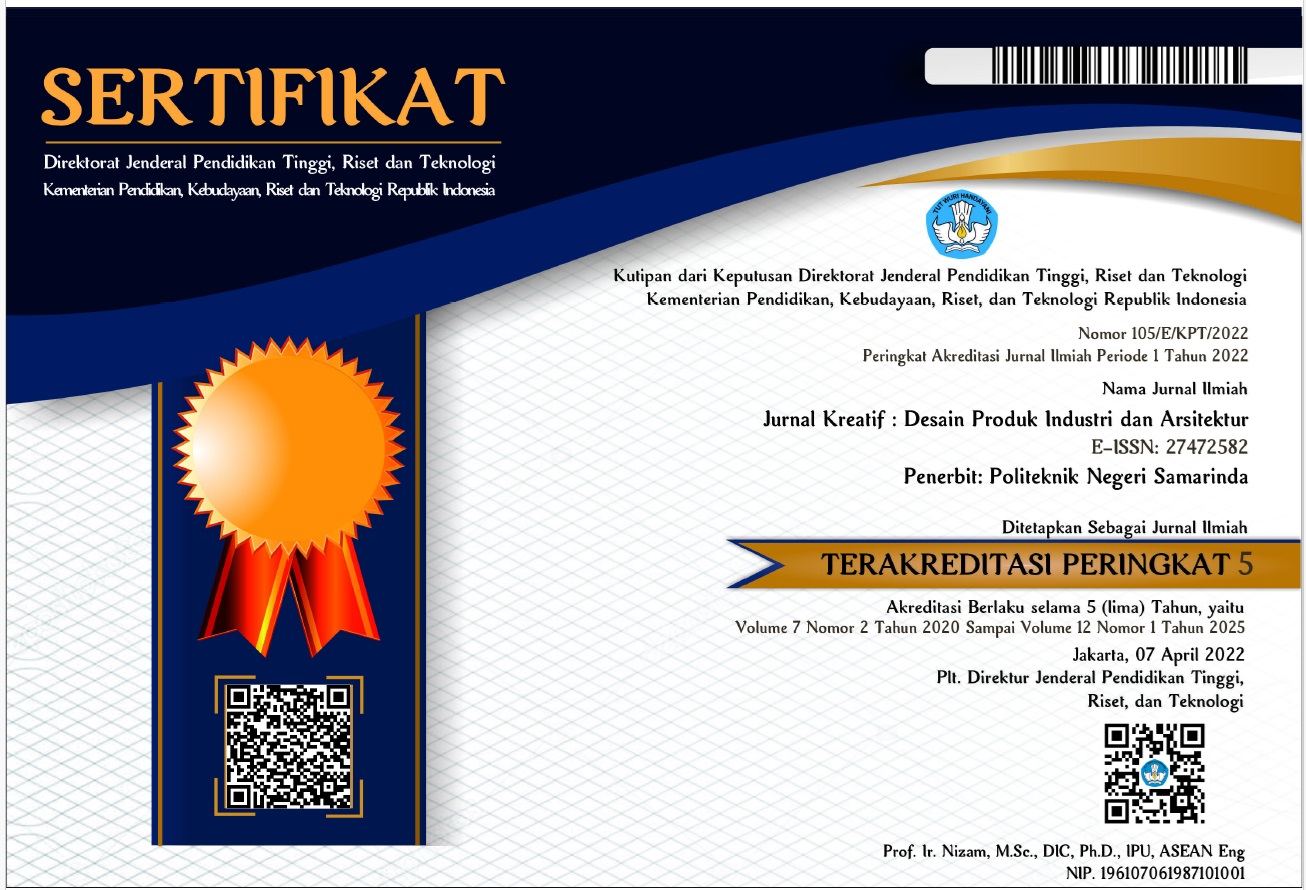PERANCANGAN PERHIASAN BERBAHAN KUNINGAN UNTUK PENGANTIN WANITA DENGAN INSPIRASI BUNGA KAMPERFULI
 Abstract views: 347
,
Abstract views: 347
,
 pdf downloads: 270
pdf downloads: 270
Abstract
This paper discusses the design of jewelry for the bride, to answer the needs due to the shift in cultural values in the way of dressing (outfit) at the wedding. In contrast to the traditional wedding attire, which had a 'grip' and a large number of objects, nowadays the procession and wedding accessories are carried out more simply, among others, by reducing the number or type of accessories, leaving some such as the main clothes, hair and facial makeup, and some jewelry. This change can be seen from the tendency of users to modify wedding clothes according to their character without referring to customs or cultural 'standards'. The design objective set out in this paper is to produce a jewelery design that facilitates the bride and groom against the above phenomena. This design process begins with identifying, analyzing, concluding, and then solving problems using a design by doing approach. To get the quality of the form used a visual approach by using the inspiration of Kamperfuli flowers. Kamperfuli flowers are an inspiration because they have a meaning that is in line with marriage. At the end of the process, a design work is obtained in the form of a prototype of a jewelry set that offers a novelty shape based on the stylized Kamperfuli flower.
Downloads
References
[2] N. Tashandra, "ingin-personal-banyak-calon-pengantin-pilih-perhiasan-custom-," in Kompas, ed. Jakarta: Gramedia Pustaka, 2018.
[3] K. S. Arsa and N. Laba, "DIversifikasi Bahan dan Teknik Penciptaan Perhiasan Sebagai Pemenuhan Kebetuhan Gaya Hidup Masyarakat di Era Postmodern," MUDRA Jurnal Seni Budaya, vol. 229, 2016.
[4] M. Kirby, A Victorian Flower Dictionary - The Language of Flower Companion. New York: Ballantine Books., 2011.
[5] AtoZFlowers. "The Ultimate Flower Resources." https://www.atozflowers.com/flower/lonicera/ (accessed 15 June, 2021).
Copyright (c) 2022 Rahmita An’nur Irawati, Dedy Ismail

This work is licensed under a Creative Commons Attribution-ShareAlike 4.0 International License.
Authors who publish with this journal agree to the following terms:
- Copyright on any article is retained by the author(s).
- The author grants the journal, right of first publication with the work simultaneously licensed under a Creative Commons Attribution License that allows others to share the work with an acknowledgment of the work’s authorship and initial publication in this journal.
- Authors are able to enter into separate, additional contractual arrangements for the non-exclusive distribution of the journal’s published version of the work (e.g., post it to an institutional repository or publish it in a book), with an acknowledgment of its initial publication in this journal.
- Authors are permitted and encouraged to post their work online (e.g., in institutional repositories or on their website) prior to and during the submission process, as it can lead to productive exchanges, as well as earlier and greater citation of published work.
- The article and any associated published material is distributed under the Creative Commons Attribution-ShareAlike 4.0 International License













